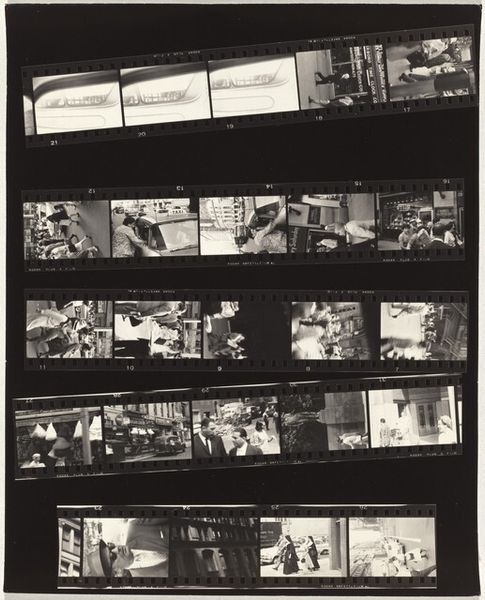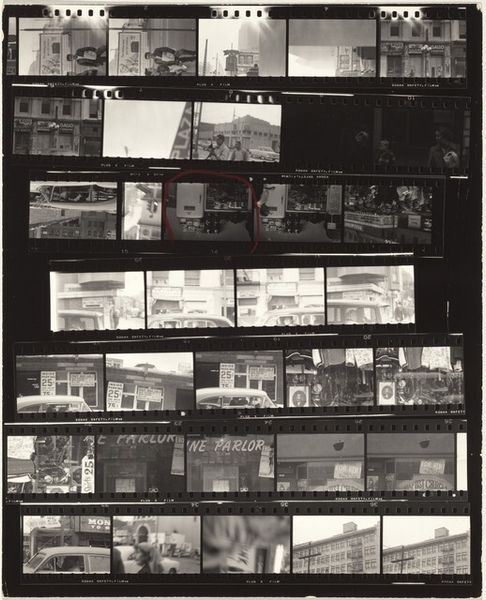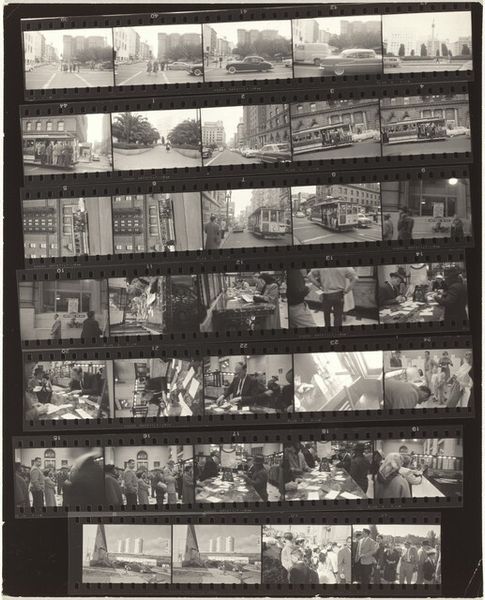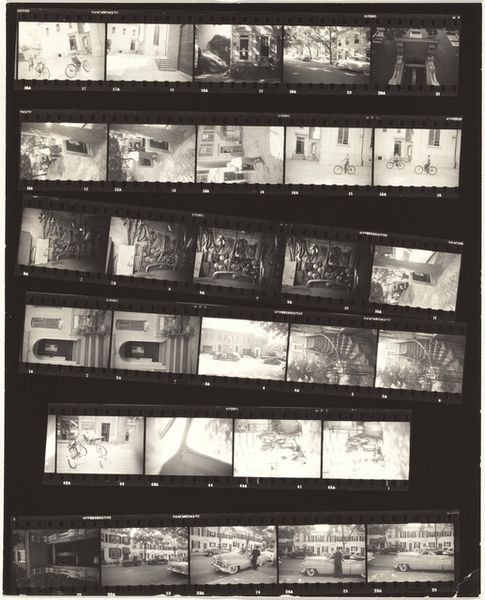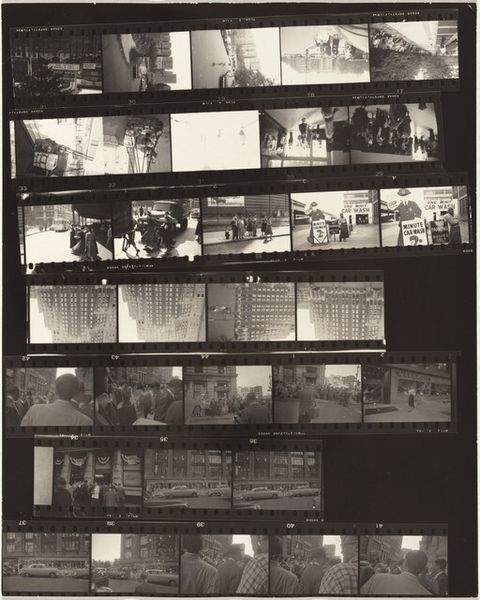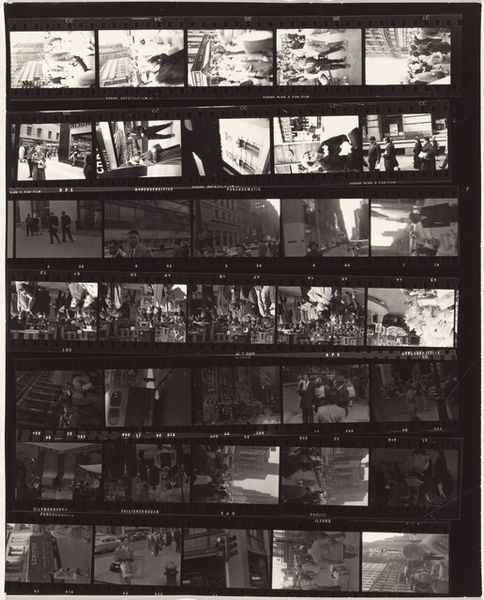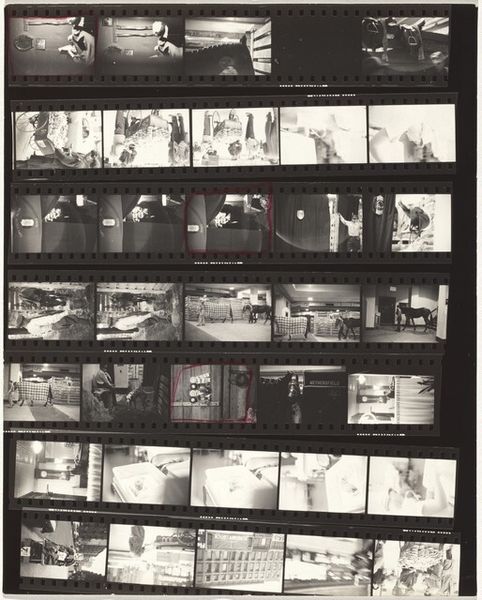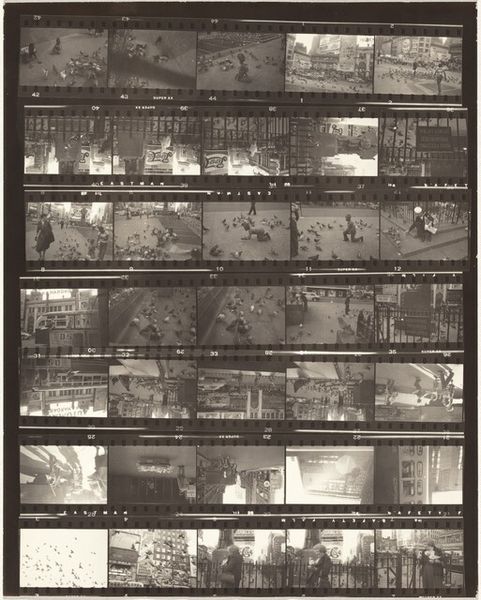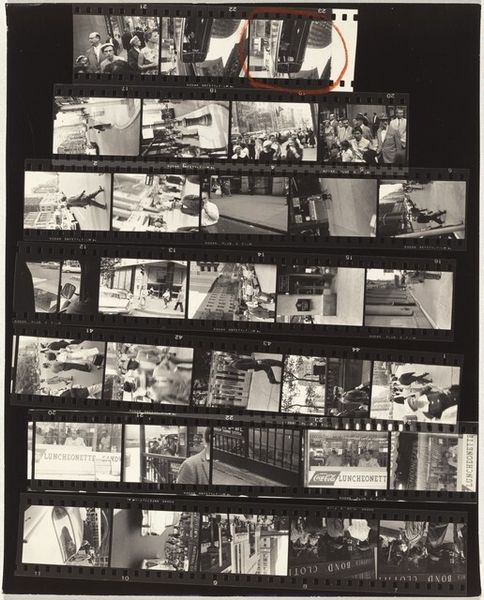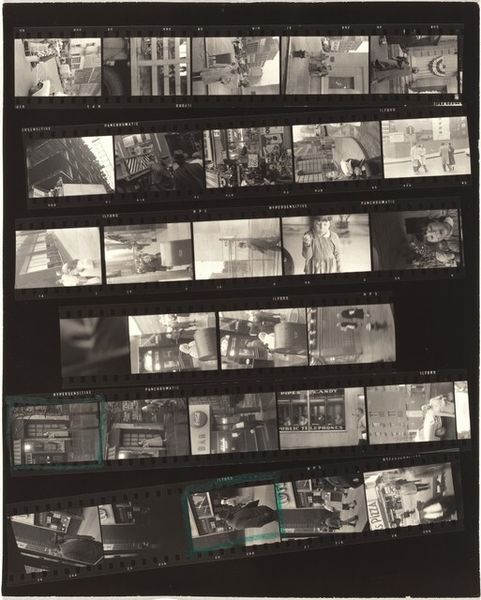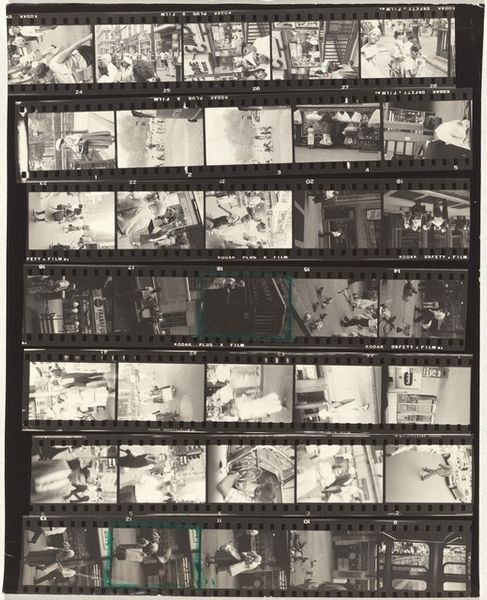
Dimensions: overall: 25.2 x 20.3 cm (9 15/16 x 8 in.)
Copyright: National Gallery of Art: CC0 1.0
Editor: Here we have Robert Frank's "From the bus 70," a gelatin silver print dating back to 1958. Looking at this contact sheet, a series of street scenes captured in a monochromatic palette, I'm struck by a sense of fleeting moments, a visual diary of urban life. What narratives do you think Frank was trying to capture or convey with this work? Curator: That's a perceptive observation! Frank was indeed interested in capturing fleeting moments, but not just any moments. He sought out those interstitial spaces where the undercurrents of American society bubbled to the surface. "From the bus 70", like much of his work from *The Americans*, disrupts the carefully constructed image of post-war prosperity. The sequencing in a contact sheet like this emphasizes themes of alienation and the subtle segregation woven into the fabric of American life. Editor: Segregation? I see scenes of everyday life. Are you suggesting he was intentionally highlighting inequalities? Curator: Absolutely. While seemingly capturing daily life, Frank was drawn to what lay beneath: racial tension, economic disparities, and a sense of disillusionment. Even the grainy, high-contrast aesthetic was a deliberate choice, rejecting the slick, commercial photography of the time. He sought authenticity. Can you see how the fragmented composition of the contact sheet mimics the disjointed experience of those marginalized within society? Editor: That's a powerful interpretation. I hadn't considered how the format itself could contribute to that sense of fragmentation and social commentary. Seeing it this way really adds a layer of meaning I hadn’t noticed before. Curator: Indeed. Art is never neutral; it's always in conversation with the world around it. By examining the socio-political landscape in which "From the bus 70" was created, we can begin to understand its lasting impact on photographic representation. Editor: This has been incredibly enlightening; thank you for sharing your perspective! It’s fascinating how historical context can reshape our understanding of even a seemingly simple snapshot. Curator: The beauty of art lies in its ability to spark these conversations and challenge our assumptions. There is always more to see and consider.
Comments
No comments
Be the first to comment and join the conversation on the ultimate creative platform.
